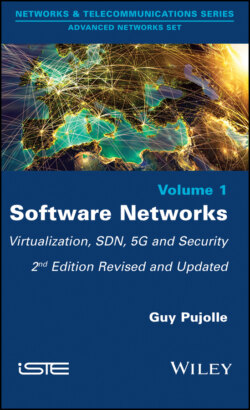Читать книгу Software Networks - Guy Pujolle - Страница 33
2.9. Urbanization
ОглавлениеWe have already mentioned the issue of urbanization of virtual machines in a network. Let us now look again at this concept in a little more detail. It involves placing the virtual machines in the network, i.e. in the Cloud, so that optimum performance is attained. While performance is, obviously, very important, in today’s world, the cost of datacenters, and therefore of networks, is based mainly on energy expenditure. To clarify the issue, Figure 2.15 shows the cost of a datacenter, distributed between the infrastructure and maintenance costs.
Figure 2.15. The cost of a datacenter environment. For a color version of the figure, see www.iste.co.uk/pujolle/software2.zip
Urbanization is an initial response to this demand to economize on power supply, attempting to bring together the virtual machines on common servers so as to be able to put a large number of servers, which have become idle, on standby. This solution is very useful at night and at low-demand times of the day. During the peak hours, the servers need to be awakened again, with a wider distribution of the virtual machines between the different servers.
Urbanization also takes account of cost factors, leading us to use the physical machines at night, and migrate the virtual machines, having them go all around the world in the space of 24 hours to stay in night mode. Evidently, this solution is viable only for light virtual machines that can be shifted with no problems, and is absolutely not appropriate for virtual storage machines processing “Big Data”.
Urbanization may affect other criteria such as the availability of the network, by facilitating access to emergency paths and virtual machines, distributed appropriately so that there are multiple access paths. Reliability also pertains to the same sensitive points, and solutions to reliability issues may be found through virtualization and urbanization.
Security elements may also be behind an urbanization. For example, certain sensitive machines may regularly change places so as to prevent having to deal with DDOS attacks. Similarly, a network may be cloned and, in the event of an attack, highly authenticated clients are switched to the clone, while the original network is gradually deprived of its resources to prevent it becoming a honey pot for the attacker.
Figure 2.16 shows a set of software networks, supplemented by diverse and varied virtual machines (servers, IP-PBX, Wi-Fi access points, etc.), which must obey an urbanization algorithm to optimize a set of criteria. Later, we will revisit the question of the intelligence to be introduced into networks to optimize the processes of urbanization.
Figure 2.16. The urbanization of a network environment. For a color version of the figure, see www.iste.co.uk/pujolle/software2.zip
